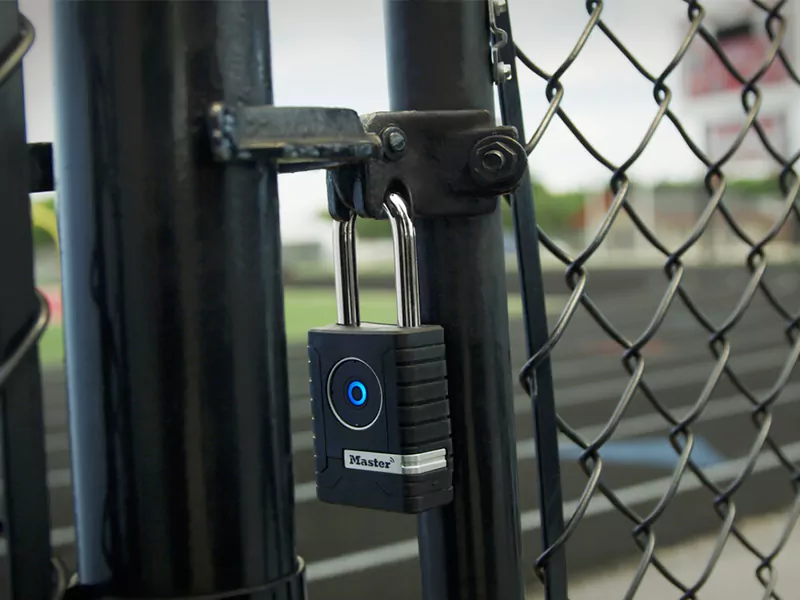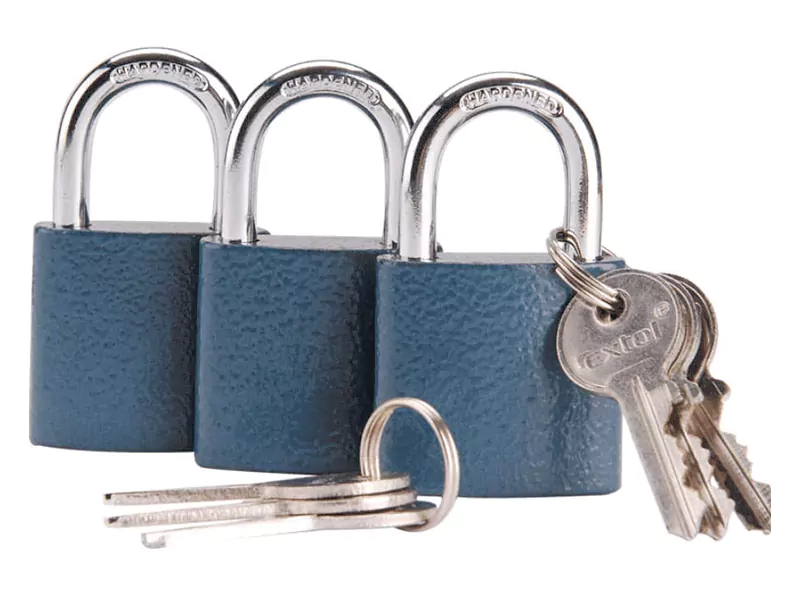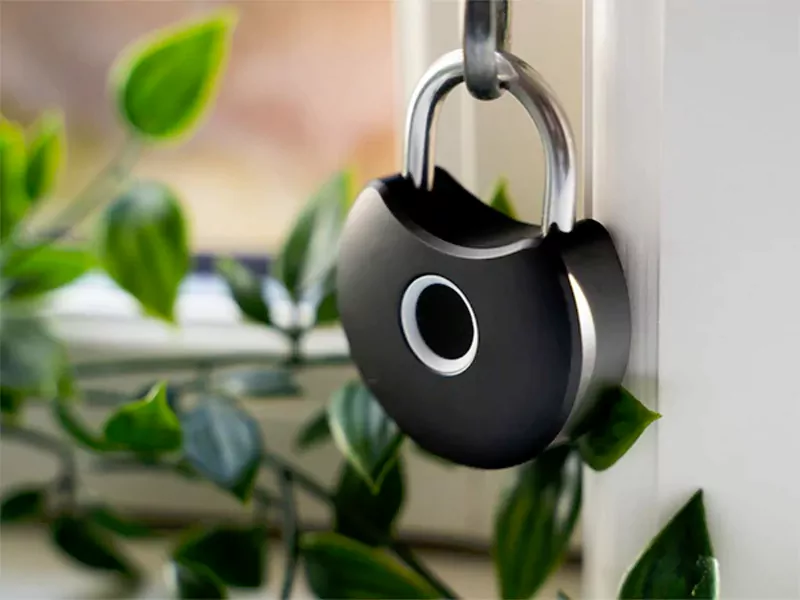Learning to use a padlock the right way is about more than turning a key or spinning a dial. Good locking practice starts with choosing the correct lock for the environment, placing it where tools cannot easily reach it, and maintaining it so it opens smoothly when you need it and resists tampering when you are away. This guide walks you through padlock types, step by step usage for keyed, combination, and smart padlocks, common mistakes to avoid, and simple maintenance routines that extend the life of your lock and improve real security.

Padlocks remain essential because they are portable, affordable, and versatile. You can secure a gym locker, a backyard gate, a tool chest, or a storage unit with the same core device. Unlike built-in door locks, a padlock pairs with chains, hasps, and latches across countless use cases. When you select the right shackle thickness and body material and combine the lock with a solid anchor point, a padlock becomes a strong first line of defense that is easy to deploy and easy to replace if your needs change.
Shackle: The U-shaped metal loop that passes through a chain, hasp, or latch. Hardened or boron steel shackles resist cutting better and are ideal for outdoor or high-risk use. Body: The enclosure that houses the locking mechanism. Solid steel and brass bodies are common, while laminated bodies offer good value and impact resistance. Locking mechanism: Pin tumbler, disc detainer, or electronic actuators keep the shackle closed until the correct key, code, or credential is presented.
Match the lock to the threat and to the environment. For indoor lockers and cabinets, a compact brass keyed lock or a reliable combination lock is often enough. For outdoor gates or storage, prioritize weather protection, shrouded or closed shackles that limit bolt cutter access, and corrosion resistance. When multiple users need access or when you want auditability, consider a smart padlock with app control and sharable digital keys.
| Use Case | Recommended Type | Key Features |
|---|---|---|
| Gym or school locker | Combination padlock | Keyless convenience, resettable code, compact size |
| Backyard gate | Keyed weatherproof lock | Hardened shackle, rust protection, protective cover |
| Contractor job box | High security keyed lock | Thick shackle, solid steel body, pick and drill resistance |
| Shared access shed | Smart padlock | Phone unlock, sharable credentials, activity log |
- Inspect the hasp, chain, or latch to confirm it is sturdy and free of cracks or loose screws.
- Insert the key fully and rotate to release the shackle. Remove the shackle and thread it through the anchor point.
- Position the lock body so the shackle faces away from easy cutter access. A tight fit reduces leverage and makes attacks harder.
- Press the shackle into the body until it clicks. Tug firmly to confirm it is seated and locked.
- Remove the key and store it in a consistent location such as a key tray or key cabinet.
- Insert the correct key without forcing it. If resistance occurs, stop and check for debris or misalignment.
- Turn the key while gently pulling on the shackle. If the lock binds, a light tap or a small amount of lock lubricant can help.
- Open the shackle and immediately relock the padlock on the hasp or keep it secured to a key ring so it does not go missing.

A rotary dial lock requires precise movements. Start by spinning the dial several full turns to clear the mechanism. Turn clockwise to the first number, then counterclockwise past the first number once and stop at the second number, then turn clockwise directly to the third number. Pull the shackle to open. Practicing a smooth rhythm helps prevent misalignment and speeds up daily use.
- Open the lock with the current combination and keep the shackle pulled out.
- Rotate the reset lever or press the set pin as instructed by the manufacturer.
- Enter a new code that you can remember but others are unlikely to guess. Avoid birthday patterns or repeated digits.
- Release the reset and scramble the dials. Test the new combination several times before putting the lock into service.

Smart padlocks pair physical strength with digital convenience. After installing the companion app, create an account and add the padlock by scanning its code or pressing the pairing button. You can grant temporary or permanent access to other users and revoke it instantly when needs change. Many models support fingerprint unlock for quick daily access while keeping a physical backup key or code for emergencies.
- Charge the battery fully before first use and set a reminder to recharge at a regular interval based on the manufacturer’s estimate.
- Enable notifications for low battery status and access events so you know when maintenance or auditing is needed.
- Create separate roles for family members, employees, or contractors with only the permissions they need.

Security improves dramatically when you control the surroundings of the lock. Use hardened hasps bolted through the door with backing plates. Keep the shackle space tight to reduce tool clearance. Mount the lock so the shackle faces down or toward a shield, which frustrates cutter and pry attacks. When using a chain, select a hardened chain with links thicker than the lock’s shackle to prevent the chain from being the weakest component.
A small maintenance routine pays off through smoother operation and longer service life. Every few months, wipe away dust and grit, add a short burst of graphite or silicone lubricant to the keyway and shackle, and cycle the lock several times to distribute the lubricant. Inspect for rust blooms, bent shackles, or loose hasp hardware. Outdoor locks benefit from protective covers and periodic freshwater rinses after exposure to salt or chemicals.
- Using a light duty lock on expensive gear. Choose a shackle diameter and body size that matches the asset value and risk.
- Leaving slack around the shackle. A tight fit denies jaws of bolt cutters the room they need to bite.
- Reusing predictable codes. Rotate combinations and avoid patterns that acquaintances can guess.
- Ignoring the anchor point. A strong lock on a weak hasp provides little real protection.
Replace a padlock if the shackle shows deep nicks, the body is cracked, the key turns roughly even after lubrication, or the mechanism jams intermittently. If a key is lost or you suspect the code has been shared widely, retire the lock and issue a new one with updated credentials. For outdoor installations, consider seasonal replacement when rust advances faster than you can control with cleaning and lubricant.
Padlocks provide flexible, portable security, while deadbolts secure doors integrated into buildings. Chains and cables extend coverage to bikes, gates, and job sites but must be hardened and thick enough to match the lock. Electronic access control brings audit trails and scheduling to doors and cabinets but costs more and requires power. Often the best approach is a layered system where a sturdy padlock protects an already tough physical barrier.
First, confirm you are using the correct key. Apply a small amount of graphite or silicone lubricant to the key and insert it several times to distribute the lubricant. Do not force rotation. If the keyway is contaminated with grit, a blast of compressed air can clear debris before lubrication.
Lightly pull up on the shackle while turning the key to relieve internal tension. For combination locks, reset the dial by spinning it several full turns and reenter the code slowly. In cold climates, a small amount of de-icer can free ice that forms around the shackle.
Check your password manager or secure notes for the recorded code. If the model supports serial number recovery, contact the manufacturer with proof of ownership. If recovery is not possible, retire the lock responsibly and select a new unit with a recovery method you can manage.
Using a padlock well is about smart choices and consistent habits. Select a lock that fits the threat level and environment, place it to minimize tool access, keep keys and codes organized, and maintain the mechanism so it works on demand. With these steps, a simple padlock becomes a dependable part of a layered security plan for your home, workplace, or on-the-go storage.
Choose a shackle that is at least as thick as the strongest part of the chain or hasp you are using. For casual indoor use, a medium shackle can suffice, while outdoor or high-risk environments call for a thicker hardened shackle that resists cutting and prying more effectively.
Safety depends on construction quality and use case. Combination locks remove the risk of lost keys and work well for shared or low-risk access. High security keyed locks with hardened shackles and robust cylinders generally resist forced attacks better when protecting valuable equipment or exposed gates.
Inspect monthly for rust and grit, rinse with fresh water after exposure to salt or chemicals, and apply graphite or silicone lubricant to the keyway and shackle. Operate the lock several times to distribute lubricant and replace any lock that sticks persistently despite maintenance.
Many smart padlocks support backup methods such as a physical key, a keypad code, or stored fingerprints. When comparing models, confirm that at least one offline method exists and practice using it before you deploy the lock so you are not stranded if your phone battery dies.
Assume the lock is no longer secure. Replace the padlock or reset the combination immediately. For smart locks, revoke digital access for the affected user and issue new credentials. Document the change so everyone who needs access has the updated information.
Try Vanma Electronic Lock
You can contact us to request samples, and to experience the convenience of Vanma electronic locks.
Contact Us Now
